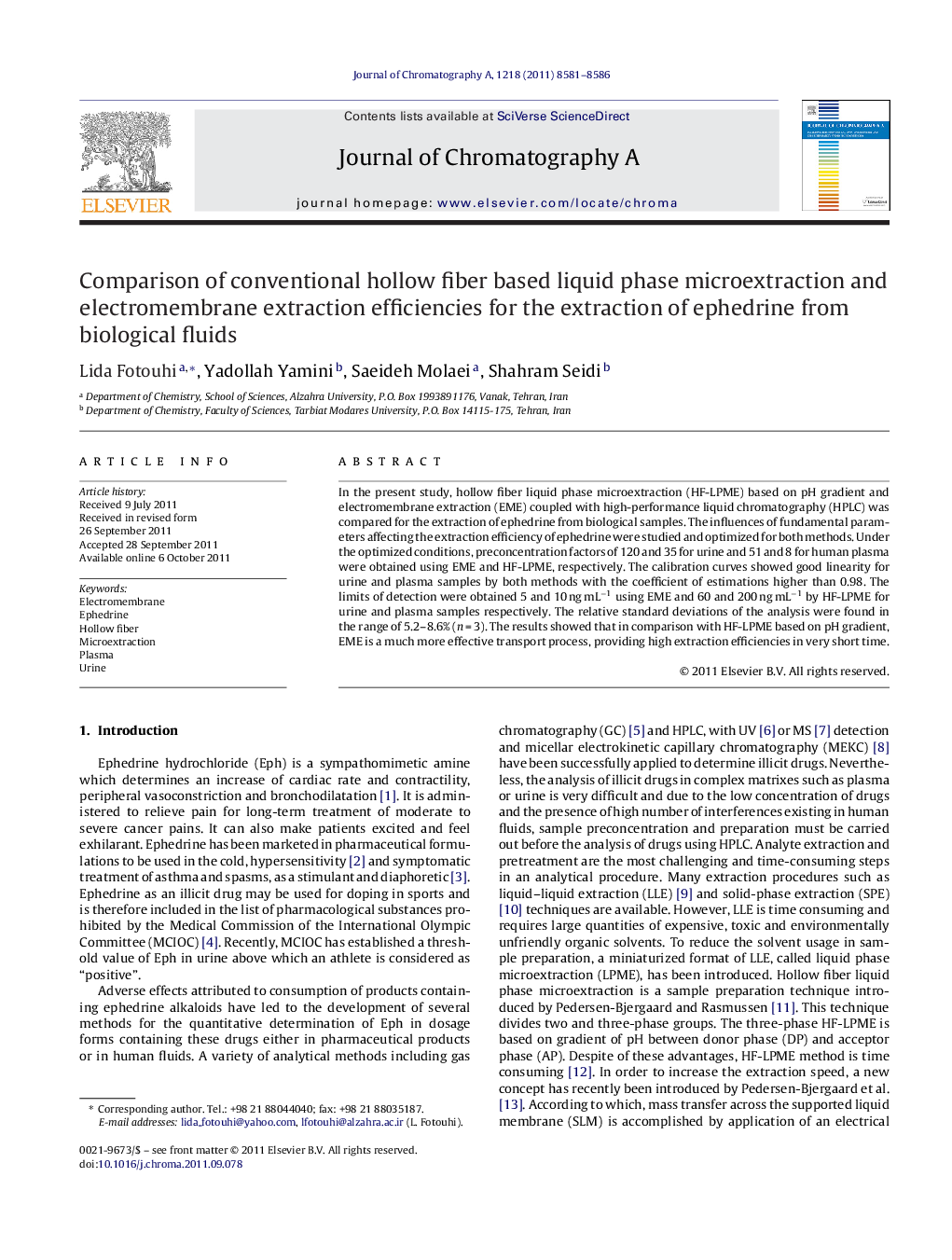| Article ID | Journal | Published Year | Pages | File Type |
|---|---|---|---|---|
| 1203357 | Journal of Chromatography A | 2011 | 6 Pages |
In the present study, hollow fiber liquid phase microextraction (HF-LPME) based on pH gradient and electromembrane extraction (EME) coupled with high-performance liquid chromatography (HPLC) was compared for the extraction of ephedrine from biological samples. The influences of fundamental parameters affecting the extraction efficiency of ephedrine were studied and optimized for both methods. Under the optimized conditions, preconcentration factors of 120 and 35 for urine and 51 and 8 for human plasma were obtained using EME and HF-LPME, respectively. The calibration curves showed good linearity for urine and plasma samples by both methods with the coefficient of estimations higher than 0.98. The limits of detection were obtained 5 and 10 ng mL−1 using EME and 60 and 200 ng mL−1 by HF-LPME for urine and plasma samples respectively. The relative standard deviations of the analysis were found in the range of 5.2–8.6% (n = 3). The results showed that in comparison with HF-LPME based on pH gradient, EME is a much more effective transport process, providing high extraction efficiencies in very short time.
► HF-LPME and EME were compared for the extraction of ephedrine. ► These techniques demonstrated several advantages especially high sample clean-up. ► As compared to HF-LPME, EME provides high PFs within short extraction times. ► HPLC was applied for determination of ephedrine. ► Using EME LODs 5 and 10 ng mL−1 were obtained for urine and plasma, respectively.
